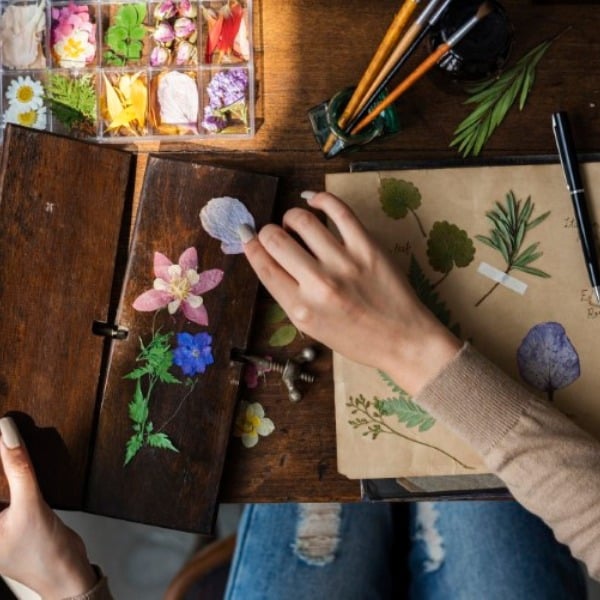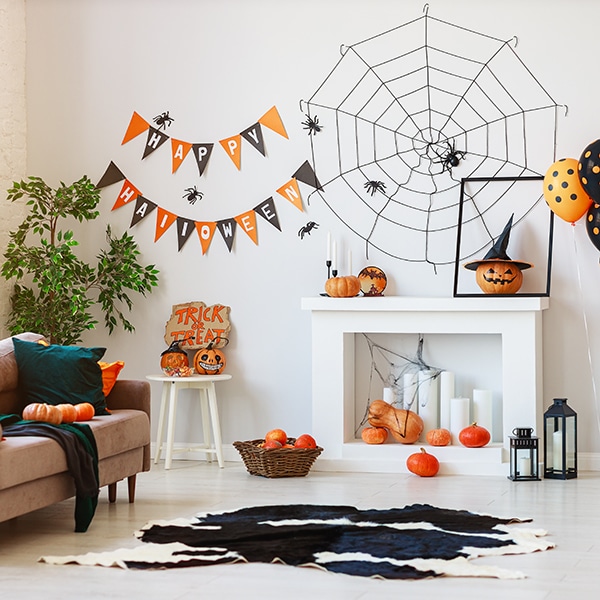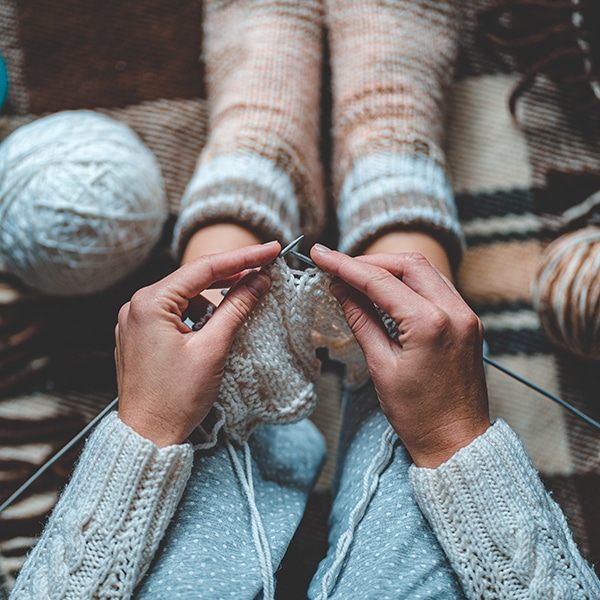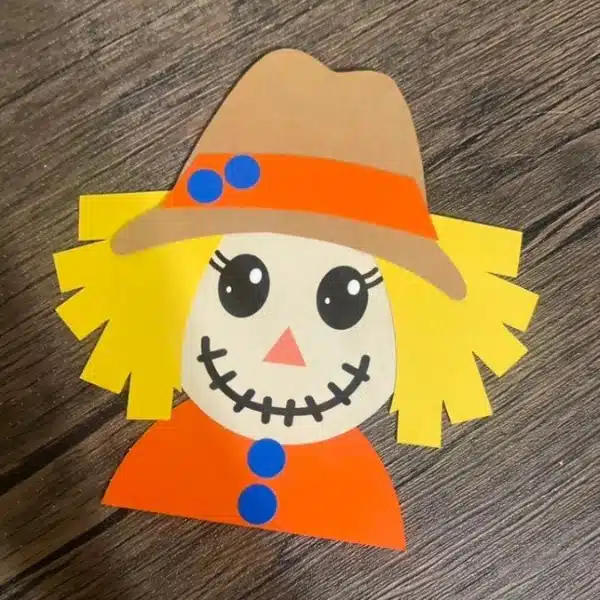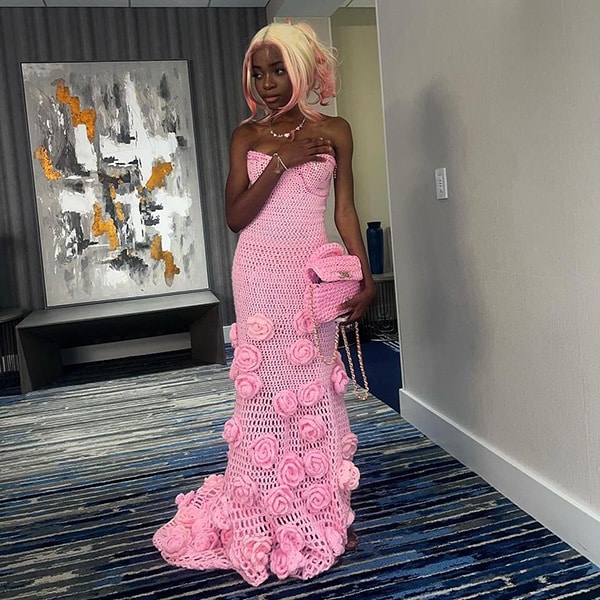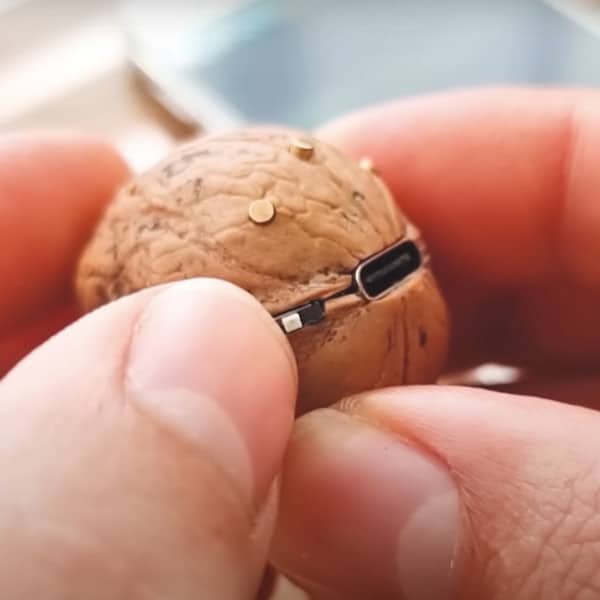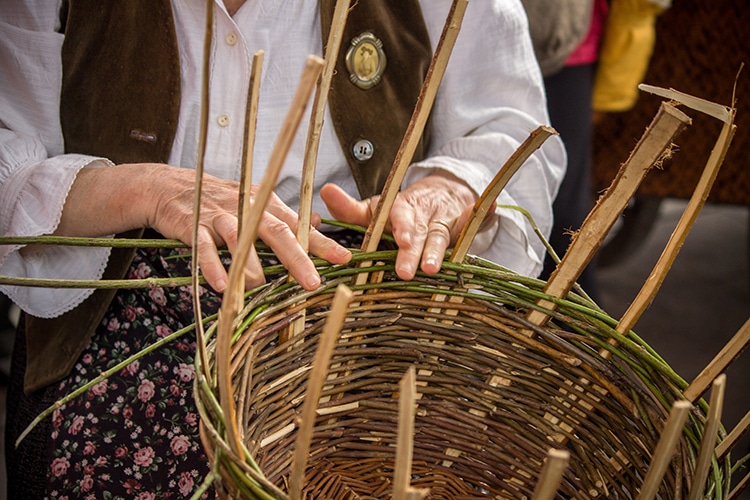
Photo: Stock Photos from SALVATORE CHIARIELLO/Shutterstock
This post may contain affiliate links. If you make a purchase, My Modern Met may earn an affiliate commission. Please read our disclosure for more info.
There are few arts with longer or more global histories than basket weaving. Pre-dating pottery, baskets were useful for Neolithic hunters and gatherers. Over the millennium, woven containers and furniture became important throughout global cultures for spiritual and aesthetic reasons. Today, basketry is an important and useful cultural practice in many societies. There are countless materials which can be woven into containers of varying size and designs. Basketry artists spend decades refining their craft, but basket weaving is also approachable and satisfying for beginners.
Read on to discover the history of basketry and how you can start your own making baskets.
Explore the beautiful, diverse history of basket weaving which stretches back millennia on each continent.
An Early History of Basket Weaving
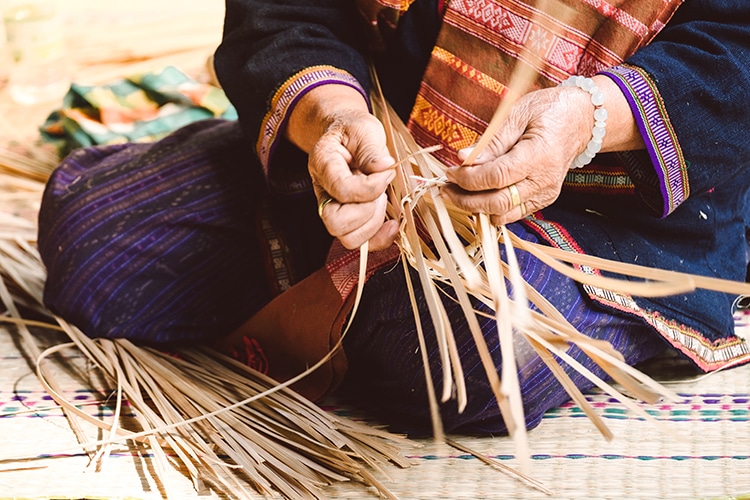
A Thai woman weaves a bamboo basket. (Photo: Stock Photos from NUU_JEED/Shutterstock)
The earliest potential evidence of woven baskets dates back to circa 25,000 BCE. Archeologists discovered Stone Age clay imprints of tightly woven material at the ancient Pavlov site in the Czech Republic. While the exact use of the woven material is unclear, the technology for basketry was clearly known. Other early imprints—and even actual fragments—of baskets have been found at Neolithic sites located in the Middle East and Kenya. Carbon dating has been used to date remaining fragments; however, the decay in natural weaving materials has probably erased evidence of the earliest basketry.
Some well-preserved examples of ancient basketry survive in the American West. Woven items from Washoe county, Nevada are between 10,000 and 11,000 years old. Outside of the U.S., examples of Chinese bamboo baskets have been found to be over 7,000 years old.
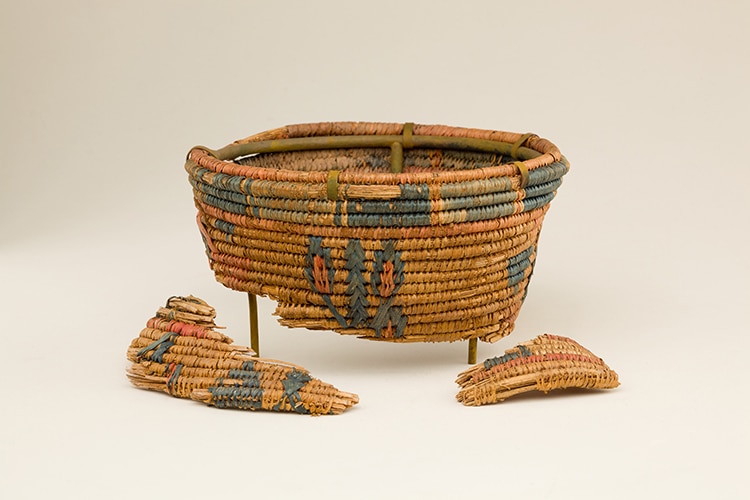
Egyptian basket, New Kingdom, Ramesside c. 1295–1070 BCE. (Photo: The Metropolitan Museum of Art [CC0 1.0])
The Ancient Egyptians used baskets in everyday life for food storage, while also using woven furniture to decorate the tombs of the wealthy. Wicker baskets—using willow branches—were a valuable export commodity for Roman Britain and can still be found in water-logged bogs. Baskets used throughout the Roman Empire came in a huge variety of shapes and sizes.
It is impossible to fully characterize the diverse body of ancient and historical baskets. Across cultures, materials and techniques varied with the environment and needs of each individual weaver. The skills needed to create beautiful and useful baskets could take many years to master; many have been passed down through the generations.
Basket Weaving Today
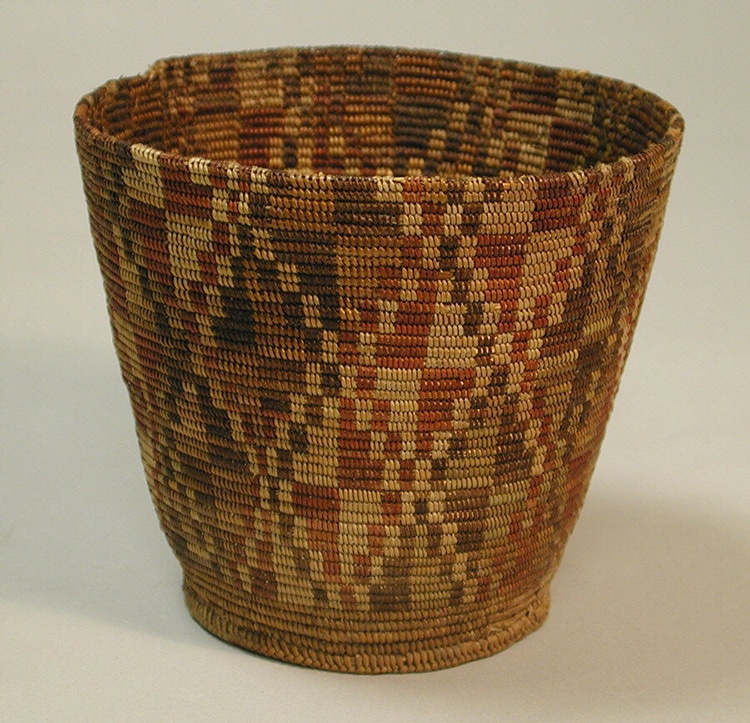
Tiwanaku basket from Bolivia, 6th–11th century. (Photo: The Metropolitan Museum of Art [CC0 1.0])
Many African countries maintain their rich basketry traditions. Among the diverse traditions, many weavers have incorporated non-natural recycled materials. The Zulu people of South Africa use colorful coated telephone wire—as well as copper wire—to weave stunning, bright pieces. Traditional materials and methods also continue to be an important art form. The contemporary Zulu artist Beauty Nxgongo creates graceful, undulating pieces using the traditional coil method—for example, this lidded basket in the collection of the Metropolitan Museum of Art.
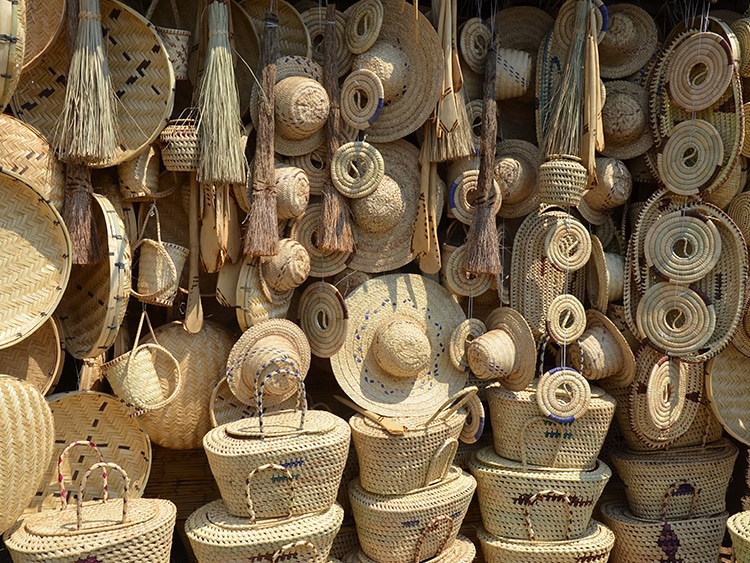
Straw hats for sale in Zambia. (Photo: © Hans Hillewaert via Wikimedia Commons [CC BY-SA 4.0])
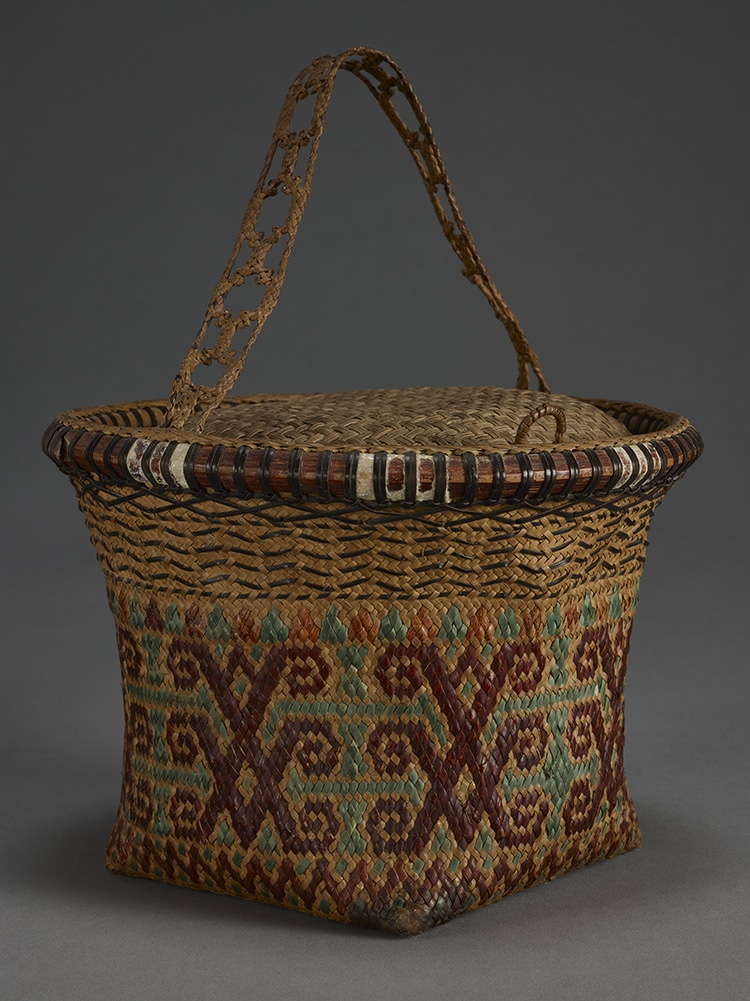
Mid-20th century basket with lid from Borneo, in raffia and tin, unknown artist. (Photo: Yale University Art Gallery)
Basic Techniques and Materials

An example of a coiling technique. (Photo: Stock Photos from NUNTARAT EKSAWETANANT/Shutterstock)
Many natural fibers can be bent and used to craft stunning pieces. Depending on the region, basket weavers today use sagebrush, reeds, bulrush, willow, grass, and many other natural materials. Synthetic materials—wire, plastic, fabric, and more—can also be used to create baskets. But ultimately, the materials used will depend on style and function.
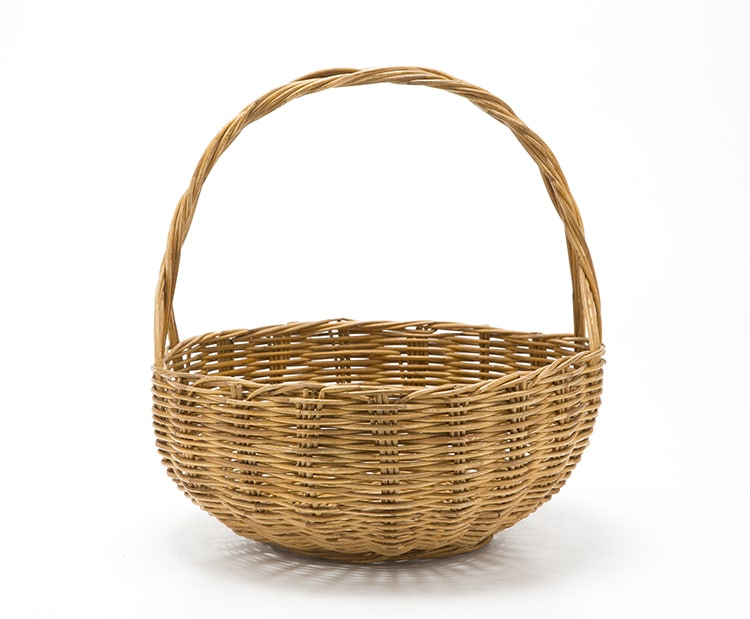
A basic example of the weaving method of basketry. (Photo: Stock Photos from SUKPAIBOONWAT/Shutterstock)
There are seven established methods for creating a basket: looping, knotting, plaiting, coiling, weaving, twining, and assembly. We will briefly discuss the four most common: coiling, plaiting, twining, and weaving.
Examples of coiling techniques can be seen in indigenous American baskets as well as those of weavers in Uganda and Rwanda. This technique involves a continuous core of grass, rushes, or pine needles. As this core is coiled round and round, a sinuous material such as raffia or strong grass is used to sew the rounds of the coil together.
In contrast, plaiting basketry is similar to braiding and uses wider, often flat materials such as palms, yucca, or strips of wood soaked in water. The basket's stakes—the vertical pieces that you weave between—are identical to the material woven horizontally (or diagonal, if you know what you're doing). This type is sometimes referred to as splint baskets. The results can vary according to the plaiting method of the weaver.
Twining methods of basketry also involve a skeleton of stakes which structures the basket. Two different flexible material—such as cord, branches, or bark—are the weavers (weaving strands). As the name suggests, between stakes the two materials are alternatively twisted as they are woven to create a fairly tight weave. The strands alternate which is visible from the outside of the vessel at each stake. The last method is simplest—weaving one strand of weaver alternatively back and forth through the stakes of the basket. You probably learned this method as a kid, but it takes patience to bend natural materials such as willow branches and cane.

Weavers in Bali. The woman on the left appears to be using a plaiting method. (Photo: Stock Photos from IRYNA RASKO/Shutterstock)
How to Get Started Basket Weaving
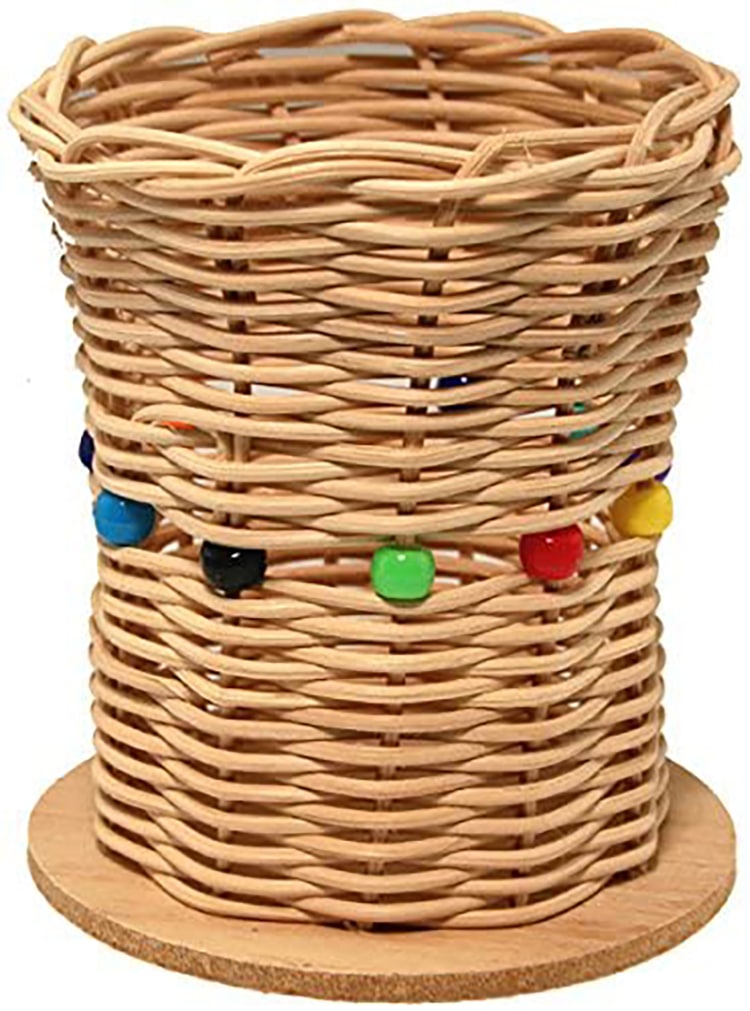
Kid's Basket Weaving Kit | $11.95
Basket weaving takes some patience, but the reward is a gorgeous and useful piece you can use at home. To start, take a look at this helpful article by Felt Magnet which explains many of the terms you may encounter in basket weaving, especially for weaving or twining projects.
Next, line up your supplies. The materials you need will be determined by the type and style of basket you are making. A basic plaited design is a good place to start your basket-weaving journey. For this, you will need basket cane or reed. You can also purchase some simple tools you may need, although if you are creative and careful you can get by with a ruler and scissors or shears.
If you are building from scratch, this great tutorial from Design Sponge will get you started. There are also many kits if you would love a pre-packaged set to try first. This Cape Cod Blueberry Basket Kit is an adorable place to start plaiting. To try weaving, this Bread Basket Weaving Kit produces the perfect kitchen accessory. There are also perfect kid-friendly basket weaving kits so the whole family can get in on the fun. Looking to try the coiling method? This video tutorial teaches you to make colorful baskets with craft-store raffia.
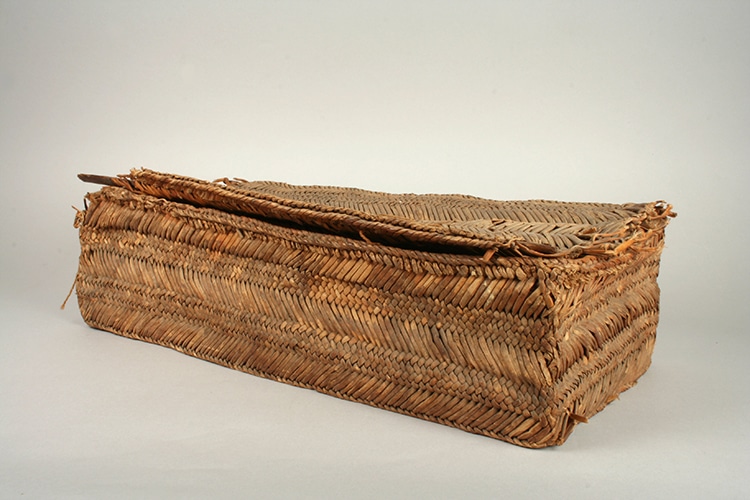
Weaving basket from the Chancay culture of Peru, 12th–14th century. (Photo: The Metropolitan Museum of Art [CC0 1.0])
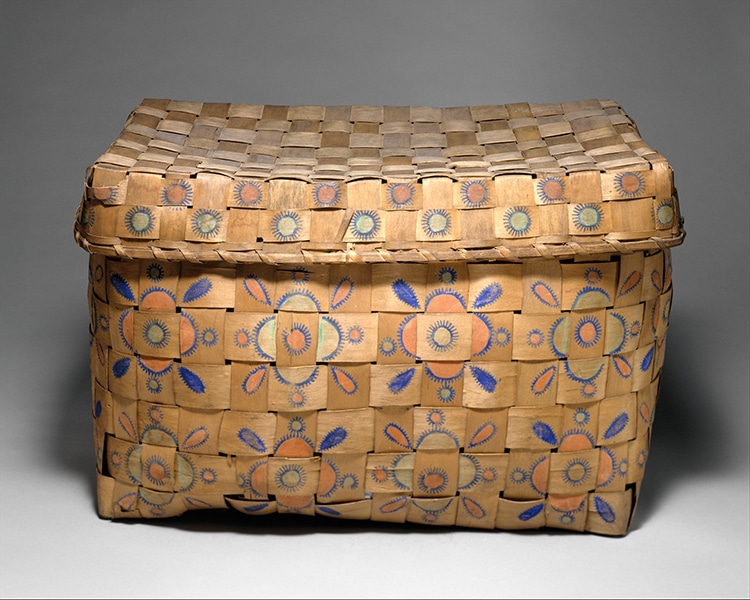
Oneida lidded basket, c. 1860. (Photo: The Metropolitan Museum of Art [CC0 1.0])
Related Articles:
Art History: Ancient Practice of Textile Art and How It Continues to Reinvent Itself
Sister Duo Weaves Textured Wall Hangings Inspired by Australian Landscapes
How to Crochet: Learn the Basics of This Time Honored Handicraft
Artist Fills Forest with Life-Size Sculptures Made from Woven Rods of Willow











































































